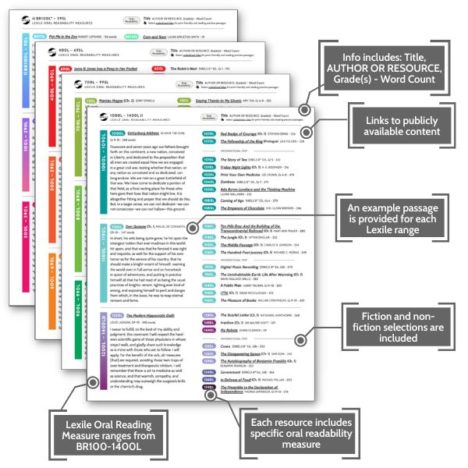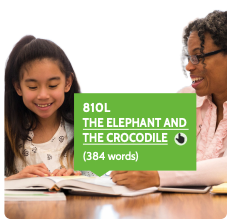The Lexile Oral Reading Framework Map is a guide for educators and families to support literacy
We know that when students can read aloud with ease, or with “fluency”, they can focus more on the meaning of the words rather than sounding them out. As readers grow in their literacy skills, this shift to automaticity allows for deeper comprehension. But how do students improve this ability? How can they practice? If you have ever sat with a new reader who is struggling to sound out words, you know it can be frustrating for them. The key is to give them reading materials that are the appropriate level of challenge but do not overwhelm them with words they have not learned to decode yet. This is the principle behind the Lexile Oral Reading Framework and the new Lexile Oral Reading Framework map is a guide for educators to find exactly the right passages for students to read aloud.
A How-to Guide for the Oral Reading Framework
 The new Oral Reading Framework map makes oral reading fluency measures actionable by linking to leveled passages that can be used for practice. The map outlines two steps for getting started–first, a teacher (or caregiver) should find the student’s starting point. Once it’s clear where a student is in terms of their fluency, the guide provides links to free, publicly available practice passages color-coded by difficulty and Lexile measure range.
The new Oral Reading Framework map makes oral reading fluency measures actionable by linking to leveled passages that can be used for practice. The map outlines two steps for getting started–first, a teacher (or caregiver) should find the student’s starting point. Once it’s clear where a student is in terms of their fluency, the guide provides links to free, publicly available practice passages color-coded by difficulty and Lexile measure range.
The map also includes:
- typical ranges for oral reading materials by grade,
- an FAQ with deeper insights into oral reading fluency measures, and
- a sidebar with information about what features determine the Lexile oral readability measure of a passage.
Oral Reading Fluency Scores are Becoming More Common
Assessments are increasingly reporting students’ oral reading fluency measures to provide educators and families with a deeper understanding of their student’s progress on the journey to become great readers. This is only half the equation, however. The texts students read can vary widely in difficulty. How do we know if students are reading aloud materials that are the right level for them? How do we know that when students’ oral reading fluency is tested, that they are all reading passages of equitable difficulty?
Student Measures vs. Text Measures
 To solve this problem, content must be analyzed too. The Lexile Oral Readability measure provides a scientific analysis of text complexity so that we know how difficult the passage is to read aloud. Once the oral readability of a passage is determined, we can ensure all students are challenged with passages of the difficulty, which provides a more accurate measure of student ability. The Lexile Oral Reading Framework is a way to measure oral reading that builds upon the established method (words correct per minute) and adds the oral readability of the passage to the equation. Now we have a way to compare apples to apples.
To solve this problem, content must be analyzed too. The Lexile Oral Readability measure provides a scientific analysis of text complexity so that we know how difficult the passage is to read aloud. Once the oral readability of a passage is determined, we can ensure all students are challenged with passages of the difficulty, which provides a more accurate measure of student ability. The Lexile Oral Reading Framework is a way to measure oral reading that builds upon the established method (words correct per minute) and adds the oral readability of the passage to the equation. Now we have a way to compare apples to apples.
Download the new, colorful map to get started. This is an excellent resource for educators and families because it illustrates how the measures work in practice. As we look for more ways to support students’ reading progress, oral reading fluency is a key piece of the literacy puzzle.
Interested in learning more about the Lexile Oral Reading Framework? Contact us!
